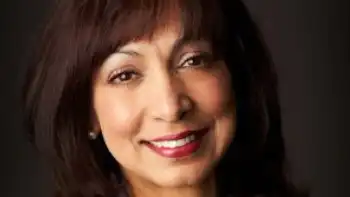Construction of massive Romaine hydro complex begins
By Canada News Wire
High Voltage Maintenance Training Online
Our customized live online or in‑person group training can be delivered to your staff at your location.

- Live Online
- 12 hours Instructor-led
- Group Training Available
The Premier of Québec, Jean Charest, accompanied by the Minister of Natural Resources and Wildlife, Claude Béchard, the Minister of Native Affairs, Pierre Corbeil, the mayor of Havre-Saint-Pierre and prefect of the Minganie RCM, Pierre Cormier, the chiefs of the Innu communities of the Moyenne-Côte-Nord and Basse-Côte-Nord, and Hydro-Québec president and CEO, Thierry Vandal, officially launched construction on the hydroelectric complex on the Romaine in Havre-Saint-Pierre.
"Today, we are launching the biggest construction project in Canada. The Romaine complex is part of our vision for the development of hydroelectricity, a clean and renewable form of energy that is the pride of all Quebecers. This new complex will serve as a powerful lever for Québec's economic development by helping create jobs and wealth, as well as contributing to the fight against climate change," the premier declared.
Minister Claude Béchard stressed the importance of the project for Québec and its regions. "Construction will extend through 2020, providing jobs to workers along the Côte-Nord beginning this summer. At the height of construction, between 2012 and 2016, the project will create over 2,000 jobs per year. It will also generate significant economic spinoffs in the form of contracts and purchases of construction-related goods and services valued at some $3.5 billion across Québec, including around $1.3 billion for the Côte-Nord."
For his part, Mr. Vandal explained that "the construction of four hydroelectric plants on the Romaine is a very good project. Construction will end in 2020, with the first power slated to come on stream in 2014. Once the project is completed, Québec will have increased its installed capacity by 1550 MW and have access to an additional 8 TWh of electricity per year."
"Premier Charest, you have given us a wonderful opportunity to prove to ourselves that the Innu Nation is capable of great things, that there is room for everyone in the respect of who we are, and that together we are true partners in the development of the region and Québec as a whole. We will respond to your invitation with energy, intelligence, and determination," added Chief François Bellefleur of the Innu community of Nutashkuan.
"The Romaine project is a major challenge that we will rise to meet," declared Mayor Pierre Cormier of Havre-Saint-Pierre. We have been waiting for this for nearly 50 years. With the consensus achieved around this initiative, there is no question that we are delighted with the project."
The project has the support of local communities, and partnership agreements have been signed with the Minganie RCM and the four Innu communities in the affected area. The agreements, which were drafted from a sustainable development perspective, are intended to secure long-term benefits for the host region by fostering the economic, cultural, and social development of the host communities. In addition, they will encourage the establishment of businesses and maximize job creation through various special training programs. The agreements provide for community participation in project construction and environmental monitoring.
A joint federal-provincial review panel approved construction of the project after a rigorous and transparent environmental assessment process.
"The project meets three objectives of the Québec Energy Strategy-enhancing energy security, making greater use of energy as a lever for economic development, and giving a greater role to local and regional communities and the First Nations. The project shows that the interests of economy, the environment, and social acceptability can be harmoniously reconciled," concluded the premier.











